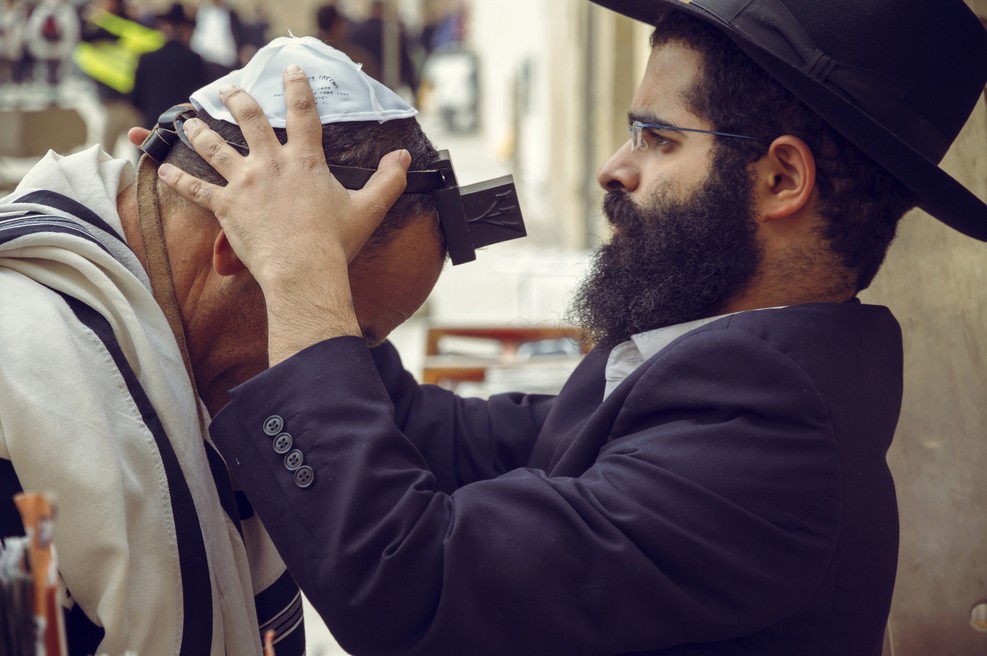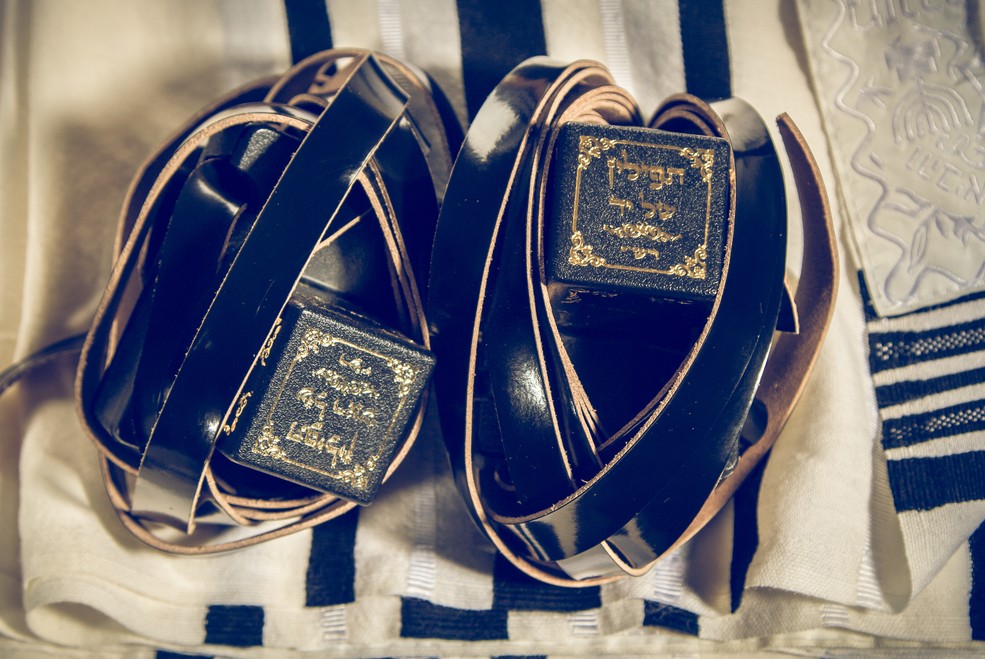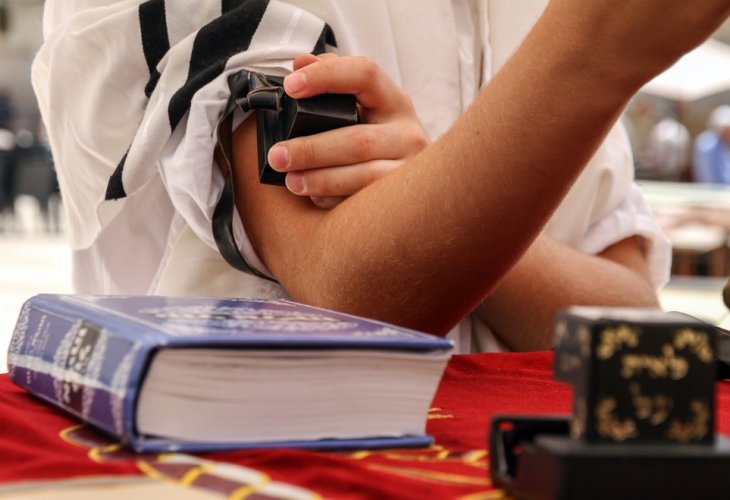The Commandment of Tefillin: A Daily Bond with Holiness
Tefillin is a positive Torah commandment that obligates one to don tefillin shel yad (arm tefillin) and tefillin shel rosh (head tefillin) each weekday. According to halacha, tefillin are worn during the daytime on weekdays, not at night or on Shabbat and festivals. In earlier generations, it was common to wear tefillin throughout the day, but today the custom is to wear them specifically during the morning prayer (Shacharit).
The sanctity of tefillin is so great that halacha requires one who wears them to be especially careful not to act in a way that would diminish their holiness. This is why the mitzvah is only practiced from the age of bar mitzvah, unlike other commandments, which we encourage children to take on at a younger age as part of educating them to be Torah observant Jews.
Our Sages taught that one who puts on tefillin merits long life. In Tractate Menachot (44), Reish Lakish says: “Anyone who puts on tefillin will live a long life,” based on the verse, “The Lord is upon them, they will live, and altogether therein is the life of my spirit; and have me recover, and make me to live.” Rashi explains: “Those who carry the name of Hashem through tefillin shall live.”
 (Photo: shutterstock)
(Photo: shutterstock)Spiritual Rewards Beyond Measure
Tefillin is more than a mitzvah. It’s a channel to deep spiritual fulfillment. In Tractate Berachot (14–15), Rabbi Yochanan teaches: “Whoever wishes to fully accept the yoke of Heaven should relieve himself, wash his hands, put on tefillin, recite the Shema, and pray. It is considered as if he built an altar and offered a sacrifice,” as it says: “I shall wash my hands in purity and circle Your altar, Hashem” (Psalms 26:6).
Tefillin also serve as a public sign of the Jewish people’s unique connection to Hashem. The verse states: “All the nations of the earth shall see that the name of Hashem is called upon you, and they shall fear you.” The Sages interpreted this to refer specifically to the tefillin worn on the head.
According to the Shimusha Rabba (a short compilation on the laws of tefillin authored over a thousand years ago), Rabbi Rava said: “Anyone who wears tefillin, wraps in tzitzit, recites the Shema, and prays is assured a place in the World to Come.” Abaye adds: “I guarantee that the fire of Gehinnom will not touch him,” and Rav Pappa promises: “All his sins will be forgiven.”
 (Photo: shutterstock)
(Photo: shutterstock)Protection, Merit, and Inner Transformation
The Zohar teaches that wearing tefillin and tzitzit is equivalent to fulfilling all 613 mitzvot. This highlights the immense spiritual weight carried by this daily act.
Tefillin also serve as a spiritual safeguard. In Tractate Menachot (43), Rabbi Eliezer ben Yaakov says: “Whoever has tefillin on his head and arm, tzitzit on his garment, and a mezuzah on his doorway is guaranteed not to sin,” citing Ecclesiastes 4:12: “A threefold cord is not easily broken.”
The Geonim, in Shaarei Teshuvah (153), explain that if a person’s merits and sins are balanced equally, and the mitzvah of tefillin is among their deeds, it can tip the scale in their favor. On the other hand, if the mitzvah of tefillin is absent, it may tip the scale toward guilt.
The Rambam, in his Laws of Tefillin, writes: “The holiness of tefillin is exceedingly great. As long as a person wears tefillin on his head and arm, he will be humble and God-fearing, will avoid frivolity and idle speech, and will not be drawn to sinful thoughts. Instead, his heart will be focused on words of truth and righteousness.”
Tefillin is not just a ritual. It is a powerful conduit of spiritual clarity, discipline, and Divine connection. Each morning, the act of donning tefillin shapes the soul, protects the heart, and realigns one's life with truth, humility, and holiness.


